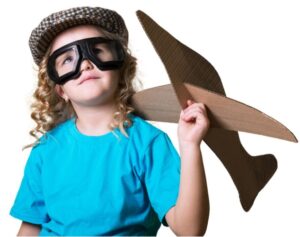In this experiment, students can explore the principles of aerodynamics by making and testing different paper airplane designs. They can use their observations to form hypotheses about what makes a paper airplane fly farther, and then test their hypotheses by making modifications to their designs and recording the results.
Hypothesis: The shape and size of the wings, as well as the weight and balance of the paper airplane, will have an effect on how far it can fly.
Experimentation Setup:
- Materials: sheets of paper, ruler, scissors, tape, and a large open space for flying the paper airplanes
- Participants: Students (individually or in groups)
Procedure:
- Students will create several paper airplanes with different wing shapes and sizes, and with different weights and balances.
- Students will throw the paper airplanes from the same location and record how far each one flies.
- Students will analyze the data they collect and draw conclusions about which paper airplane design flew the farthest.
Equipment Needed:
- Sheets of paper
- Ruler
- Scissors
- Tape
- Large open space for flying the paper airplanes
Probable Outcome:
The probable outcome of this experiment is that students will observe that paper airplanes with certain wing shapes and sizes, and with a specific weight and balance, tend to fly farther than others.
They may also discover that certain factors, such as wind conditions and throwing technique, can affect the flight distance of the paper airplane.
By making modifications to their designs based on their observations, students can improve the flight distance of their paper airplanes and gain a better understanding of the principles of aerodynamics.
Use the sheet to circulate amongst students. They can depict their design on this template.



